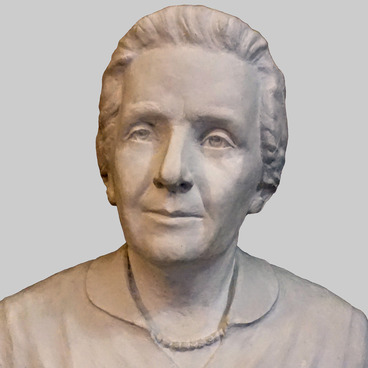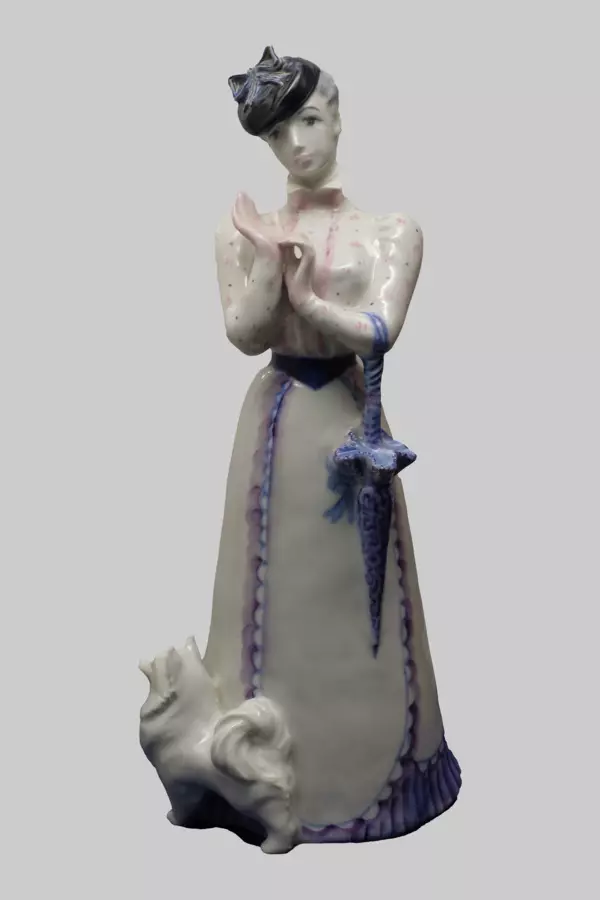The corner space of the literary exposition is occupied by a glass showcase with a porcelain figurine of a woman holding a dead bird with outstretched wings in her limp hands. This is a statuette of Nina Zarechnaya, the heroine of Chekhov’s “The Seagull”. The author of this composition, sculptor Asta Davydovna Březitskaya (1912-2004). She portrayed Zarechnaya in a white dress, with blue cuffs, a collar and a belt. The same shade is applied to the hair, eyebrows, eyes of the female figurine and the killed seagull. The composition was cast at the Moscow Experimental Production Plant of Monumental and Decorative Sculpture. Next to the fastening hole at the base of the figurine, the sculptor’s autograph is written in black - ‘A. Br “.
Asta Davydovna was a master of porcelain sculpture. She has created over 500 pieces from a variety of ceramic materials. She successfully collaborated with the Dulevo Porcelain Factory, which, in addition to producing ceramic tableware, specialized in the manufacture of souvenir and gift products from faience and porcelain.
The premiere performance of “The Seagull”, which took place at the Moscow Art Theater on December 17, 1898, became a new peak in the development of world theatrical art. The play not only opened Chekhov as a playwright to the viewer, but also laid the foundations of modern theater. The innovative searches of European directors of that time found semantic completeness in “The Seagull”, staged by Stanislavsky and Nemirovich-Danchenko. The action on the stage was no longer built around the main character, but democratically developed in the space of a group of characters with common views and aspirations. This was the transition of the troupe and the director from demonstrating external realities to a frank display of the inner world of the characters, with a drawing of its finest details. In “The Seagull”, Chekhov predetermined the understanding of contemporary theater.
Asta Davydovna was a master of porcelain sculpture. She has created over 500 pieces from a variety of ceramic materials. She successfully collaborated with the Dulevo Porcelain Factory, which, in addition to producing ceramic tableware, specialized in the manufacture of souvenir and gift products from faience and porcelain.
The premiere performance of “The Seagull”, which took place at the Moscow Art Theater on December 17, 1898, became a new peak in the development of world theatrical art. The play not only opened Chekhov as a playwright to the viewer, but also laid the foundations of modern theater. The innovative searches of European directors of that time found semantic completeness in “The Seagull”, staged by Stanislavsky and Nemirovich-Danchenko. The action on the stage was no longer built around the main character, but democratically developed in the space of a group of characters with common views and aspirations. This was the transition of the troupe and the director from demonstrating external realities to a frank display of the inner world of the characters, with a drawing of its finest details. In “The Seagull”, Chekhov predetermined the understanding of contemporary theater.







